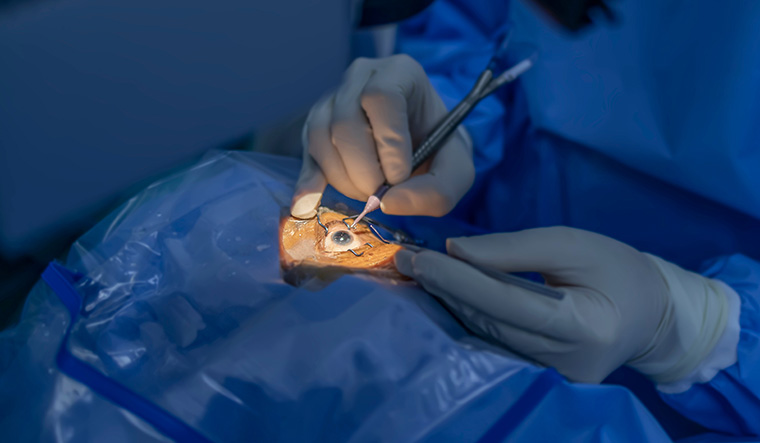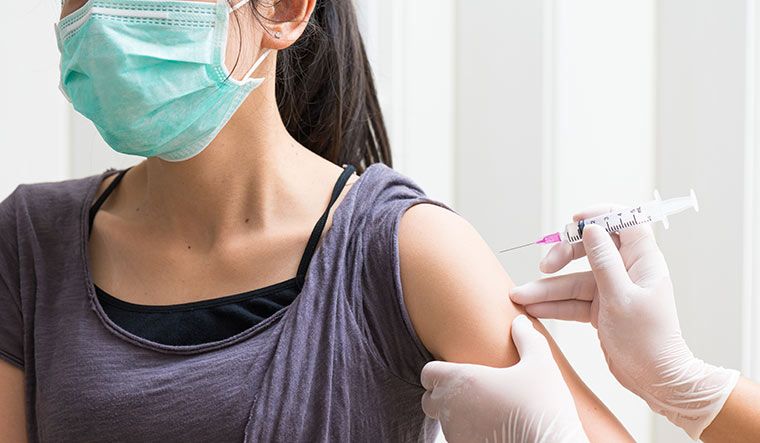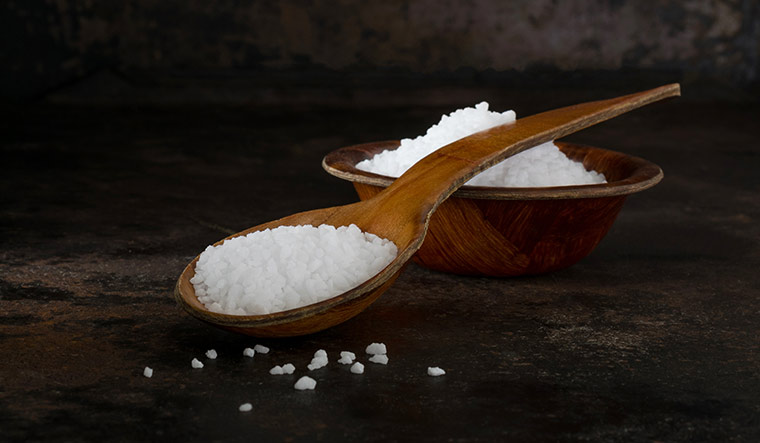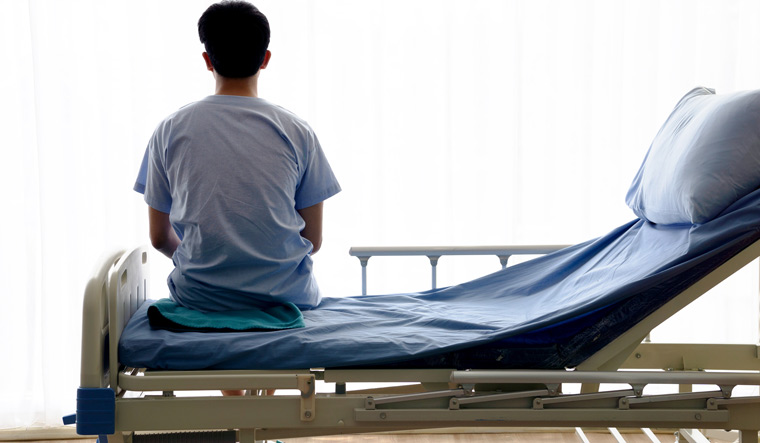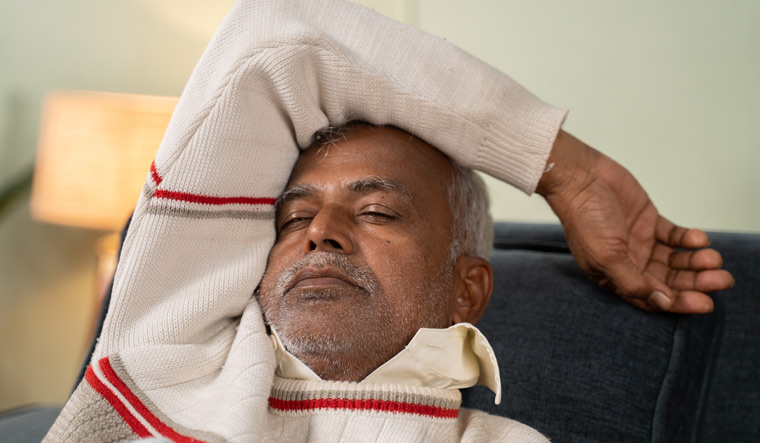Middle-aged women who are vegetarian are more likely to suffer a hip fracture compared with women who regularly eat meat. The UK study published in the journal BMC Medicine, analysed rates of hip fractures in 26,318 women aged 35 to 69. The women were grouped based on their eating habits: regular meat eaters; occasional meat-eaters (ate less than five times a week); pescatarians (ate fish but not meat) and vegetarians. During an average of 22.3 years of follow-up, there were 822 hip fractures, which were confirmed from hospital records.
Vegetarians were the only group who had an elevated risk of hip fracture after adjusting for other factors known to increase the risk such as smoking and age. They had a 33 per cent elevated risk than regular meat-eaters. According to the researchers, low body mass index and nutritional deficiencies could play a role. Vegetarian diets often have lower intakes of nutrients such as protein, calcium, vitamin D, vitamin B12 and other micronutrients that promote bone and muscle health. "Low intake of these nutrients can lead to lower bone mineral density and muscle mass, which can make you more susceptible to hip fracture risk,” the study said.
The average BMI among vegetarians was also slightly lower than that of regular meat eaters. A lower BMI can indicate people are underweight, which can mean poor bone and muscle health and higher risk of hip fracture.
Cornea implant made from pig skin restores vision
In a pilot study, a cornea implant made of collagen protein from pig's skin restored vision in 20 patients with diseased corneas, most of whom were blind before the procedure. About 12.7 million people around the world are blind due to damaged or diseased corneas. The only remedy for these patients is to receive a donated human cornea transplant. However, just one in 70 people can get a cornea transplant.
The new bioengineered corneas are affordable, can be mass produced and can be stored for up to two years, while donated corneas from humans must be used within two weeks. Swedish researchers from Linköping University used the experimental implant to treat 20 patients in India and Iran with the disease keratoconus, in which the cornea becomes so thin that it can lead to blindness. Fourteen of the participants were completely blind before the surgery and six of them were partially blind.
Two years after surgery, none of them is blind anymore and three of the Indian participants who had been blind prior to the study have perfect (20/20) vision. Normally a keratoconus (cornea becoming thin and developing a cone-like bulge) patient's cornea is surgically removed and replaced with a donated cornea, which is sewn into place using sutures. The patient must also use immunosuppressive eye drops for at least a year or even longer, to avoid rejection. But the new implant can be inserted into the existing cornea, without removing existing tissue, after a small incision is made with advanced laser, and no stitches are required.
No complications were reported during surgery or during two years of follow-up. The patients only needed eight weeks of treatment with immunosuppressive eye drops to prevent rejection of the implant. “This work demonstrates restoration of vision using an approach that is potentially equally effective, safer, simpler and more broadly available than donor cornea transplantation,” the study published in the journal Nature Biotechnology concluded.
Take blood pressure readings from both arms
Taking blood pressure readings from both arms and considering the higher reading would be better at identifying and managing patients at risk of high blood pressure and related cardiovascular issues, suggests a study published in the journal Hypertension. Although current guidelines recommend checking blood pressure in both arms and adopting the higher arm readings, it is not routinely followed. The researchers analysed data from 23 international studies that included 53,172 adults with an average age of 60.
When the higher arm's reading was considered, 12 per cent of people were reclassified as having hypertension. They would have fallen below the threshold for diagnosis and treatment of hypertension if only the lower arm’s reading was used. Using the higher arm reading also reclassified about 1,700 people as being at a higher risk for cardiovascular disease. Using the higher arm blood pressure readings was a better predictor of future cardiovascular risks as well as all-cause mortality and cardiovascular mortality, the study found.
“Failure to measure both arms and using the higher reading arm will not only result in under-diagnosis and under-treatment of high blood pressure, but also underestimation of cardiovascular risks for millions of people worldwide,” the study said.
Did You Know?
A study that included 25,871 participants found that vitamin D supplements did not reduce the risk of bone fractures in generally healthy middle aged and older adults, when compared with a placebo
The New England Journal of Medicine
Adding HPV vaccine to surgical removal of cervical lesions cuts cancer risk
Giving women the human papillomavirus (HPV) vaccine when surgically removing precancerous cervical lesions can further reduce their risk of developing cervical cancer. HPV vaccines are highly effective in preventing HPV infection and many countries offer HPV vaccination to girls and boys around the age of 11 or 12 to protect them from future infections and HPV related cancers. But their effectiveness in women with ongoing infections is not clear. Even after removal of high-grade precancerous lesions, women still have a high risk of recurrent cervical lesions and other malignancies related to HPV infection.
The study published in The BMJ analysed 18 studies to examine the effect of HPV vaccination after surgical treatment in preventing the risk of HPV infection or recurrent lesions. Overall, the risk of recurrence of high grade preinvasive disease was reduced by 57 per cent in patients who were also vaccinated compared with those who just had the surgical treatment.
When considering the two high-risk types of HPV (HPV16 and HPV18, which cause most cervical cancers), the results were even stronger–a 74 per cent reduction in precancerous lesions.
Did You Know?
Even moderate alcohol consumption was associated with greater iron buildup in the brain, which in turn was associated with worse cognitive functions, including poor working memory, comprehension, reasoning and problem solving and slower reaction speeds
PLOS Medicine
Salt substitutes lower risk of heart attack and stroke
Your risk of heart attack, stroke and death from all causes can be reduced significantly by using salt substitutes, according to a study published in the journal Heart. Cardiovascular disease is a leading cause of death worldwide, and high blood pressure is a major contributing factor. In salt substitutes, a proportion of sodium chloride is replaced with potassium chloride which can help lower blood pressure.
A recent Chinese study showed that salt substitutes reduced the risk of heart attacks, stroke and early death. To find out if the benefits would apply to people in other parts of the world, the researchers used data from 21 international clinical trials involving 31,949 participants from Europe, the western Pacific region, the Americas and southeast Asia.
Using salt substitutes lowered blood pressure among all participants irrespective of geographical regions, age, sex, history of high blood pressure, weight, baseline blood pressure and baseline levels of urinary sodium and potassium. Overall, systolic blood pressure dropped by 4.61 mm Hg and diastolic blood pressure by 1.61 mm Hg. Each 10 per cent reduction of sodium chloride in the salt substitute was associated with a 1.53 mm Hg and a 0.95 mm Hg greater reduction in systolic and diastolic blood pressure, respectively. The drop in blood pressure further facilitated a reduced risk of heart attack, stroke and death from all causes.
Using salt substitutes lowered the risk of heart attack or stroke by 11 per cent and risk of dying from cardiovascular disease by 13 per cent and death from any cause by 11 per cent. Higher intake of dietary potassium was not associated with any adverse effects.
Men are more likely to get cancer than women
Men are more likely to develop cancer than women, and this could largely be due to biologic differences rather than behavioural factors, such as smoking, alcohol use, diet and physical activity, according to a US study published in the journal Cancer.
To assess differences in risk between men and women for 21 shared cancer sites, the researchers used data from 1,71,274 men and 1,22,826 women between the ages of 50 and 71 who were enrolled in a diet and health study from 1995 to 2011. As many as 17,951 new cancers were diagnosed in men and 8,742 were found in women during the study period. Men had a greater than two-fold higher risk for most cancers; they had lower rates only for thyroid and gallbladder cancers. The risks were 1.3 to 10.8 times higher in men than women at other anatomic sites. The greatest difference in risks were seen for oesophageal cancer (10.8 times higher), larynx (3.5 times higher), gastric cardia–part of the stomach closest to oesophagus (3.5 times higher) and bladder cancer (3.3 times higher).
Men had a greater risk for most cancers even after accounting for a wide range of risk behaviour and carcinogenic exposure, pointing to biologic differences as the major contributing factor for the increased risk. Understanding these biologic mechanisms could lead to better prevention and treatment.
Did You Know?
Globally, almost half of deaths due to cancer, in both men and women, can be attributed to preventable risk factors, including smoking, alcohol use or having a high body mass index
The Lancet
FDA approves first hair loss drug to treat alopecia areata
The US Food and Drug Administration has approved the first pill to treat adults dealing with the hair loss disorder alopecia areata, an autoimmune disorder that affects about 147 million people worldwide. It causes the body to attack its own hair follicles, causing patchy or complete hair loss and sometimes eyebrows, eyelashes, facial hair and body hair.
Olumiant (baricitinib), a once daily pill, offers systemic treatment for the condition–it treats the entire body rather than a specific spot. Olumiant is a Janus kinase (JAK) inhibitor that is already approved for the treatment of rheumatoid arthritis. The drug was approved based on two phase-3 clinical trials that included 1,200 patients with at least 50 per cent hair loss for more than six months.
The most common side effects included upper respiratory tract infections, headache, acne, high cholesterol, increase of an enzyme called creatinine phosphokinase, urinary tract infection, liver enzyme elevations, inflammation of hair follicles, fatigue, lower respiratory tract infections, nausea, genital yeast infections, anaemia, low number of certain types of white blood cells, abdominal pain, shingles and weight gain.
Olumiant should not be used in combination with other JAK inhibitors or any other potent immunosuppressants, the FDA warned. The drug comes with a boxed warning for serious infections, mortality, cancer, major adverse cardiovascular events and thrombosis. The findings of the clinical trial were published in the New England Journal of Medicine.
Napping regularly linked to hypertension, stroke
According to a Chinese study published in the journal Hypertension, napping regularly is associated with an increased risk of high blood pressure and stroke. The researchers analysed data from the UK Biobank that included genetic and health information from more than five lakh participants aged 40-69.
After excluding participants who already had hypertension or suffered a stroke at the start of the study, the researchers focused on 3,58,451 participants and divided them into groups based on frequency of napping– usually, sometimes, and never/rarely and followed them for 11 years.
People who napped frequently had a 12 per cent higher risk of developing high blood pressure and 24 per cent higher risk of having a stroke compared with those who never napped. When napping frequency increased by one category–from never to sometimes or sometimes to usually–the risk of high blood pressure increased by 40 per cent. While napping itself may not be the issue, it could be a sign of poor nighttime sleep and other underlying health problems, the researchers suggested.
A majority of the frequent nappers were men, and reported smoking, daily drinking, insomnia, snoring and being an evening person compared with people who napped sometimes or never.



